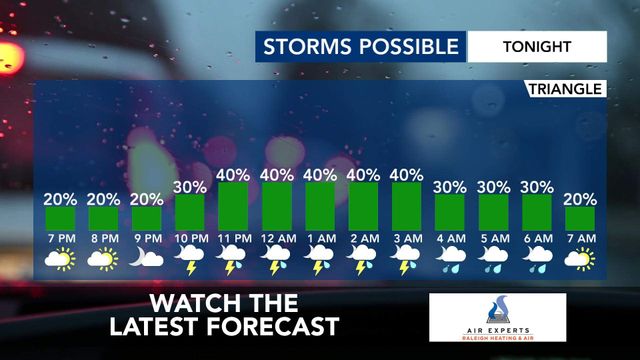Inside the artistry of NC music poster veteran Ron Liberti
Tucked into his cozy in-home studio, artist Ron Liberti slowly pours thick, black ink lengthwise across the top of a mesh screen.
With two swipes of a squeegee, the ink pushes through miniscule holes in the screen and wets the surface of a 11-by-17-inch piece of paper below. Liberti lifts up the screen to reveal the result — a gig poster advertising an upcoming show in Greensboro.
TOTALLY SLOW // LP RELEASE PARTY // THE FLAT IRON – MAY 04 2024
The letters shoot out of an exploding television superimposed onto a pink background image of smiling concert-goers. Carefully holding it by the corners, Liberti gives the poster a nod of approval and places it on a drying rack behind him.
Then, he repeats the process. Again and again and again until dozens of posters sit on the drying rack.
“I almost get into this zen mode,” he says with a smile while zipping the squeegee across the screen once more.
Once dry, each of the posters will be marked in pencil with Liberti’s initials and a number, 1-50, signifying the limited print release. Then they’ll be ready to be tacked up at kiosks, telephone polls and coffee shop windows ahead of the concert.

Liberti, 56, has been creating posters for North Carolina music venues for more than three decades. His specialty is screenprinting, a centuries-old technique that he first learned while studying across the pond at Brighton Polytechnic in the late 1980s. After moving to North Carolina in 1991, Liberti became entrenched in the growing Chapel Hill music scene and began making posters for iconic venues like The Cat’s Cradle. It’s a freelance gig he’s held since, and he doesn’t plan on stopping anytime soon.
“I can’t imagine retiring,” Liberti said. “As long as there’s shows and as long as people need posters, that’s how long I’m gonna do it.”
The New Jersey native belongs to a relatively small fraternity of poster artists whose work can sometimes be overlooked despite their importance to the indie music scene. Even in an age of digital advertising and social media, Liberti said a great poster can give a band credibility and bring attention to small music venues.

Gig posters have been around for as long as rock concerts have existed, although they didn’t begin to take shape as their own unique art form until the psychedelic rock movement of the 1960s.
Screenprinted posters gained popularity in the 1980s, and young artists – many of whom were in bands of their own – made posters and flyers that reflected the DIY ethic of the independent alt-rock bands of the era.
Screenprinting was an accessible medium because it required few supplies. With a screen, a photosensitive emulsion, ink and a squeegee, artists could print original designs onto posters or t-shirts.
One such artist was Rick Miller, who plays guitar and sings for the rockabilly outfit Southern Culture on the Skids. Miller formed SCOTS in Chapel Hill in 1983, but before that he was a fine arts major at San Diego State University where he studied postermaking.
In the early days of the band, Miller printed most of SCOTS’s posters and merchandise.
“I think it’s important that [the posters] were original,” Miller said. “Like the music, I think, coming up with your own ideas and your own artwork was important.”
As SCOTS found greater commercial success in the 1990s and focused more on touring, the work of creating their posters was outsourced to artists like Liberti, who has created several designs for the band. But Miller said that visual artwork is still an important aspect of his band’s image.
“I think the aesthetic is just part of the mindset, part of the identity of the music,” he said.
Liberti’s poster art journey started by making posters for his still-active band, Pipe, which he formed shortly after moving to North Carolina. At the time he was supporting himself by bartending at the Hardback Cafe and Bookstore, a local haunt that a 2001 INDY Week article described as “ground zero for Chapel Hill’s slacker-indie rock scene.”
Pipe wasn’t booking gigs consistently, but Liberti still found inspiration for posters through the many emerging bands that came through Chapel Hill.
“I had more ideas than we had shows,” he admitted.
So he approached Cat’s Cradle owner Frank Heath and offered to create posters for upcoming shows. He started with photocopied posters but eventually began screenprinting out of his “tiny but cheap” apartment above Cliff’s Meat Market in Carrboro. The space was just as much a studio as it was a living space. Not only was it covered in Liberti’s screenprinting supplies, but the shower also doubled as a tool for washing out used screens.
“It was so gross,” Liberti said with a laugh. “But it was fun.”
Influenced by the dadaist artists of the early 20th century, Many of Liberti’s posters reflect a collage style that he achieves by cutting and pasting nearly every aspect of the design, from photographic elements to the lettering.
Liberti’s goal is to create a poster that reflects the band’s unique identity.
“I try to make the poster look like the band sounds or makes me feel in certain ways,” he said. “So I find inspiration from the music.”
From conceptualization to design to printing, Liberti said the process can take days. Eventually there were more bands rolling through the Cradle than posters Liberti could make, and some of the work was handed off to another young person making a name for themselves in the local poster art scene: Casey Burns.
Burns, a 1998 UNC-CH graduate and Morehead Scholar, would go on to become the first in-house art director for the Cat’s Cradle, a position he held until 2006. He was younger than Liberti by about eight years, and had a different style, one more reminiscent of his favorite comic book artists like George Pratt and Will Eisner.
Burns said Liberti’s endorsement gave him the confidence to pursue postermaking full time.
“Ron being like ‘this is cool’ made me feel like it was something worth paying more attention to in my own work,” Burns said.
Neither Liberti or Burns still reside in Chapel Hill, but their influence and work still lives on in the community.
Burns moved away to Portland in 2006 and is currently based in New York City where he works as an independent art director for clients ranging from Nike to The New York Times. Liberti relocated to Wilson, a quaint town an hour-and-twenty-minute drive east of Chapel Hill, where he still screenprints posters for the same clientele of music venues across the state.
The world around Liberti has changed – social media and digital mediums have drastically changed how many posters are made and distributed – but his approach to the work has not. He still puts a premium on the physical medium and his printing set-up is nearly identical to how it was 30 years ago.
If anything, the industry’s shift toward digital work and larger batches of prints has made his posters more of a unique commodity.
“Maybe I’m not part of the bigger poster world,” he said. “I’m in this little world and people seem like they like it and they come to me.”
Both Liberti and Burns’ work has been preserved by UNC-CH’s Southern Folklife Collection located in Wilson Library. Curator Steven Weiss said acquiring the collections was part of a greater effort by the library to focus on Chapel Hill’s rock music scene.
“The purpose of these materials are to promote the upcoming shows, and they’re up briefly and then they largely disappear. So this is a way of extending that life and sharing it with a different public in a way,” Weiss said.
Liberti continues to add to the collection, and during the pandemic he worked to better organize the vast archive of old posters stowed away at his house in Wilson. By his estimation he’s created more than 1,000 designs over the years.
As honored as Liberti is that UNC-CH has deemed his art worthy of archival, he maintains that his posters are more at home on kiosks and telephone poles than in libraries or art galleries. That’s something he hopes remains true for a long time.
“As much as I am proud that they’re up there, they belong on the streets, really,” he said. “They belong on the poles.”
Story by Lucas Thomae/Cover photo by Carson Elm-Picard. Video by Sarah Choi. All are students in the University of North Carolina at Chapel Hill Media Hub.









